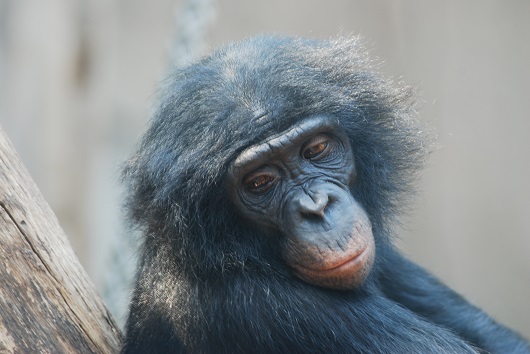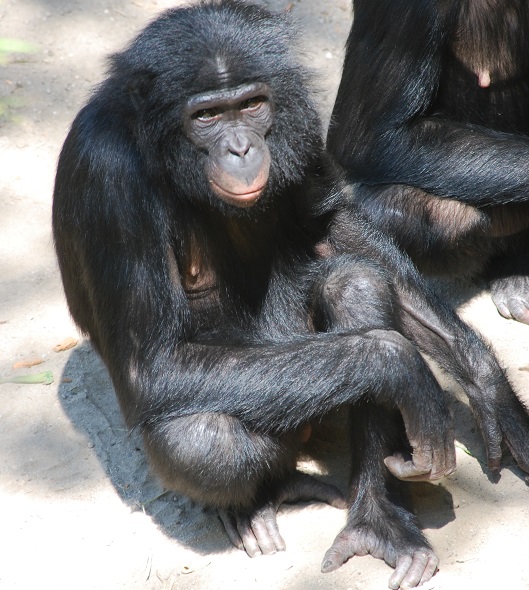Apes can understand how others see the world

The ability to understand how others see the world, may not be unique to humans as previously thought, but exist in apes too, an international team of researchers, including the University of St Andrews, has discovered.
Being able to put themselves in another’s situation, was thought to be a trait specific to human beings, however a new study – published in Science – shows chimpanzees, bonobos and orangutans can also think this way.
The ability to attribute goals, desires and beliefs to others (so-called Theory of Mind) plays a crucial role in understanding other people and accurately predicting their behaviour.
In the last few decades dozens of studies have shown that apes are sensitive to what others can and cannot see, and can interpret the behaviour of others, in terms of the goals that they pursue, not necessarily the outcomes that they achieve.
However, repeated attempts to provide evidence that they were also capable of predicting what others would do when they held a false belief had failed.
The latest study adapted an anticipatory looking task (originally developed for human infants) that only required subjects to watch videos while sipping juice. The researchers then measured apes’ gaze movements using an infrared eye-tracker installed below the screen showing the movies.
Apes watched two short videos depicting a person watching another person, dressed in a King Kong suit, hiding in one of two haystacks. In the first scenario the agent witnessed the King Kong character hiding inside the first haystack; in the second, the agent witnessed the King Kong character hiding in the first and then the second haystack.
Eye-tracking software revealed that chimpanzees, bonobos and orangutans gazed longest on the location where the watcher falsely believed King Kong to be, even though the apes themselves knew that he was no longer present.

These results mirror those from similar experiments with human infants under the age of two and represent a key first step in developing a full blown theory of mind. Since all ape species were capable of making this prediction, it is conceivable that this ability is not unique to humans but it has existed in the primate family tree for at least 13 to 16 million years when chimpanzees, bonobos, orangutans and humans last shared a common ancestor.
Professor Josep Call, of the School of Psychology and Neuroscience at the University of St Andrews, is one of the authors of the study. He said: “Apes predicted where an agent would go (or reach) not based on the current state of the world but on what had been the state of the world when the agent witnessed a particular event.
“This finding is exciting for at least two reasons. First, it demonstrates an unprecedented accuracy for predicting the precise location where an agent will go based on what she witnessed. Second, it indicates that apes consider that past states of the worldunder certain conditions may exert a stronger influence than present ones in determining agents’ behaviour.”
Notes to news editors
This research was supported by the National Science Foundation (NSFGRFP DGE-1106401), the Keihanshin Consortium for Fostering the Next Generation of Global Leaders in Research, the Japan Society for the Promotion of Science (JSPS KAKENHI 26885040, 16K21108, JSPS KAKENHI 26245069, 24000001) and the European Research Council (ERC-Synergy SOMICS 609819).
Issued by the University of St Andrews Communications Office, contactable on 01334 467310 or [email protected].
Category Research